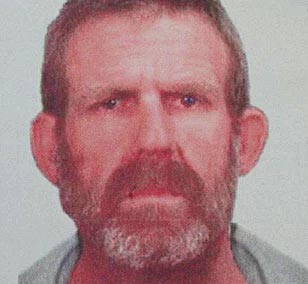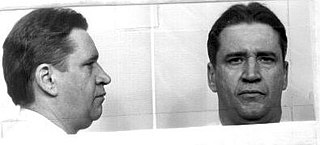Related Research Articles

The Wah Mee massacre was a mass shooting that occurred during the night of February 18–19, 1983, in the Wah Mee gambling club at the Louisa Hotel in Seattle, Washington, United States. Fourteen people were bound, robbed and shot by three gunmen, 22-year-old Kwan Fai "Willie" Mak, 20-year old Keung Kin "Benjamin" Ng and 25-year-old Wai Chiu "Tony" Ng. Thirteen of the victims died, but 61-year-old Wai Yok Chin, a former U.S. Navy sailor and Pai Gow dealer at the Wah Mee, survived to testify against the three in the separate high-profile trials held between 1983 and 1985.

Bradley John Murdoch is an Australian criminal serving life imprisonment for the July 2001 murder of English backpacker Peter Falconio in Australia. He will be 74 when eligible for parole in 2032. Murdoch is being held in Darwin Correctional Centre in Darwin, Northern Territory. He has lodged two appeals against his conviction, both of which were unsuccessful. The High Court of Australia refused special leave to appeal on 21 June 2007. He is forbidden to talk to the press.

The lynching of Michael Donald in Mobile, Alabama, on March 21, 1981, was one of the last reported lynchings in the United States. Several Ku Klux Klan (KKK) members beat and killed Michael Donald, a 19-year-old African-American, and hung his body from a tree. One perpetrator, Henry Hays, was executed by electric chair in 1997, while another, James Knowles, was sentenced to life in prison after pleading guilty and testifying against Hays. A third man was convicted as an accomplice and also sentenced to life in prison, and a fourth was indicted, but died before his trial could be completed.

Bevan Spencer von Einem is a convicted child murderer and suspected serial killer from Adelaide, South Australia. An accountant by profession, he was convicted in 1984 for the murder of 15-year-old Adelaide teenager Richard Kelvin, the son of local television and radio personality Rob Kelvin. Von Einem is serving life imprisonment. He was in G Block of Yatala Prison for decades but was transferred to Port Augusta Prison in the north of the state in 2007.
The 1981 Brink's robbery was an armed robbery and three related murders committed on October 20, 1981, by several Black Liberation Army members and four former members of the Weather Underground, who were at the time associated with the May 19th Communist Organization. The plan called for the BLA members – including Kuwasi Balagoon, Sekou Odinga, Mtayari Sundiata, Samuel Brown and Mutulu Shakur – to carry out the robbery, with the M19CO members – David Gilbert, Judith Alice Clark, Kathy Boudin, and Marilyn Buck – to serve as getaway drivers in switchcars.
Guin "Richie" Phillips was a gay man in Elizabethtown, Kentucky. Phillips disappeared on June 17, 2003. His body was found on June 25, 2003, in a suitcase in Rough River Lake.
Anthony Grandison is an American drug dealer and murderer who was formerly on death row in Maryland. He was sentenced to death for ordering the killing of a pair of witnesses in 1983. On December 31, 2014, his sentence was commuted to life without parole by outgoing governor Martin O'Malley who reprieved all four members of Maryland's death row.
The 2007 hitman case is an Australian criminal case involving Steven Wayne Spaliviero and Swede Charlotte Karin Lindström. Lindström is so far the only one sentenced for the crime. Spaliviero served 11 years in prison and was released October 2017, but was never charged for the hitman case. The hitman case has been widely reported by media in Australia and Scandinavia.
Lindsey Robert Rose is an Australian serial killer from New South Wales, currently serving five sentences of life imprisonment without the possibility of parole for the murder of five people between 1984 and 1994.

Erich Bauer, sometimes referred to as "Gasmeister", was a low-level commander in the Schutzstaffel (SS) of Nazi Germany and a Holocaust perpetrator. He participated in Action T4 program and later in Operation Reinhard, when he was a gas chamber operator at Sobibór extermination camp.
Christine Marie Lundy, 38, and her 7-year-old daughter Amber Grace Lundy were murdered in Palmerston North, New Zealand, on 29 or 30 August 2000. In February 2001, after a six month investigation, Christine's husband and Amber's father, Mark Edward Lundy, was arrested and charged, and in 2002, he was convicted of the murders and sentenced to life imprisonment with a minimum non-parole period of 17 years.
Barry Allan Beach is an American who was sentenced to 100 years in prison without parole in 1984 for the 1979 murder of Kimberly Nees in Poplar, Montana. During the years following his conviction, Beach gained support from influential state and national advocates who said his murder confession, the lynchpin of his conviction, was coerced. In 2015, his sentence was commuted to time served, plus ten years on probation.
State of Texas v. Yolanda Saldívar was a criminal trial held at the Harris County Criminal Courthouse in Downtown Houston, in the U.S. state of Texas. The trial began with the jury's swearing-in on October 9, 1995, through opening statements on October 12, to a verdict on October 23. Former nurse Yolanda Saldívar was tried on one count of first-degree murder after the shooting death of American Tejano music singer Selena on March 31, 1995, after which she held police and the FBI Crisis Negotiation Unit at bay for almost ten hours. The case has been described as the most important trial for the Hispanic population and was compared to the O. J. Simpson murder trial by media outlets. It was one of the most publicly followed trials in the history of the state of Texas.
Aimé Simard was a Canadian outlaw biker and hitman. He was a member of the Montreal-based Rockers Motor Club, a support club for the Hells Angels. He operated on the side as a contract killer, working for the Hells Angels and other organized crime groups in Canada. He would later turn crown witness and inform on his club. The Rockers operated from 1992/mid-2000s out of Montreal, Quebec, Canada.

On April 18, 2017, a racially motivated shooting spree occurred in Fresno, California, leaving three white people dead. The gunman, Kori Ali Muhammad, a black supremacist, was convicted of four murders and four attempted murders. Muhammad said he went on his shooting spree because of his hatred for white people and particularly white men. Muhammad fired off 17 shots, shooting and killing three men, shooting at and missing another three men, and shooting at a vehicle with passengers inside. The passengers of the vehicle were unharmed. All of Muhammad's victims were white.
On 4 June 2019, a mass shooting occurred in Darwin, Northern Territory, Australia. The Northern Territory Police confirmed that four people were killed in the incident and another one was injured. A 45-year-old man, Benjamin Glenn Hoffmann, was arrested and subsequently convicted for murder and manslaughter.
On April 16, 2012, Robert Cipriano was murdered by his adopted son, 19-year-old Tucker Robert Cipriano and Tucker's 20-year-old friend Mitchell Young at the Cipriano family home in Farmington Hills, Michigan.
Eugene Alvin Broxton is an American murderer and suspected serial killer. Convicted and sentenced to death for the May 1991 murder of a woman in Channelview, Texas, Broxton is also the sole suspect in four other murders for which he has never been convicted but remains the sole suspect.

Daniel Joe Hittle was an American serial killer, spree killer, and mass murderer who shot and killed five people, including a police officer, during a rampage in Dallas and Garland, Texas, in 1989. At the time, he was on parole for the 1973 murders of his adoptive parents in Motley, Minnesota. For his latter crimes, Hittle was sentenced to death and subsequently executed in 2000.
William Lewis Reece is an American serial killer, rapist and kidnapper. In 2015, he was linked via DNA to the 1997 cold case murder of a woman in Oklahoma, for which he was subsequently convicted and sentenced to death. Not long after, he confessed to three murders associated with the Texas Killing Fields, for which he was convicted and sentenced to life imprisonment in 2022.
References
- 1 2 "Postcard Bandit hopes for transfer to WA". The 7.30 Report . Australian Broadcasting Corporation. 7 July 2005. Archived from the original on 12 March 2007.
- 1 2 3 4 5 6 7 8 R v Crabbe [2004] NTSC 63 , Supreme Court (NT).
- 1 2 Motel deaths: truck driver seemed to cry, court told. The Sydney Morning Herald : 15 March 1984, p.12.
- ↑ Truck driver denies he was 'easy to provoke'. The Sydney Morning Herald : 20 March 1984, p.14.
- 1 2 Haupt, Robert. Bar room death came at full throttle. The Age : 19 August 1983, p.1.
- ↑ Fifth truck victim dead. The Age : 19 August 1983, p.3.
- 1 2 Driver on 4 murder counts. The Age : 19 August 1983, p.1.
- ↑ Court shown video of motel crash victims. The Sydney Morning Herald : 19 October 1983, p.13. [ permanent dead link ]
- ↑ Saw man leaving motel death truck, court told. The Sydney Morning Herald : 14 March 1984, p.14.
- ↑ Truck driver left through hole in wall, court told. The Age : 14 March 1984, p.18.
- ↑ Drew Warne-Smith (18 August 2007). "Time capsule". The Australian . Archived from the original on 8 September 2007. Retrieved 19 April 2009.
- ↑ Driver who killed five at Ayers Rock gets life. The Age : 22 March 1984, p.17.
- ↑ Truck driver gets life for killing five in bar. The Sydney Morning Herald : 8 October 1985, p.5.
- ↑ "Man who drove road train into pub denied parole". ABC News. 5 September 2013. Retrieved 5 September 2013.
- ↑ Mack truck mass murderer Doug Crabbe has parole application rejected
- ↑ Garrick, Matt; Morgan, Thomas (21 February 2023). "One of Australia's worst mass murderers approved for pre-release program in step towards parole". ABC News. Australia. Retrieved 7 April 2023.
- 1 2 R v Crabbe [1985] HCA 22 , (1985) 156 CLR 464(26 March 1985), High Court.
- ↑ "Hunters & Collectors - The Jaws of Life Images". Discogs. Retrieved 5 October 2013.